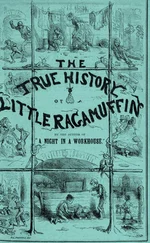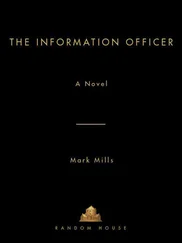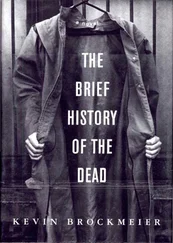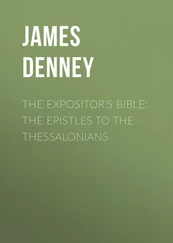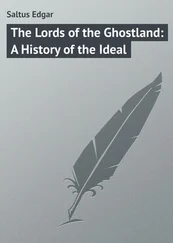But the obvious analogy led people astray. They failed to decipher the code of the drums because, in effect, there was no code. Morse had boot-strapped his system from a middle symbolic layer, the written alphabet, intermediate between speech and his final code. His dots and dashes had no direct connection to sound; they represented letters, which formed written words, which represented the spoken words in turn. The drummers could not build on an intermediate code—they could not abstract through a layer of symbols—because the African languages, like all but a few dozen of the six thousand languages spoken in the modern world, lacked an alphabet. The drums metamorphosed speech.
It fell to John F. Carrington to explain. An English missionary, born in 1914 in Northamptonshire, Carrington left for Africa at the age of twenty-four and Africa became his lifetime home. The drums caught his attention early, as he traveled from the Baptist Missionary Society station in Yakusu, on the Upper Congo River, through the villages of the Bambole forest. One day he made an impromptu trip to the small town of Yaongama and was surprised to find a teacher, medical assistant, and church members already assembled for his arrival. They had heard the drums, they explained. Eventually he realized that the drums conveyed not just announcements and warnings but prayers, poetry, and even jokes. The drummers were not signaling but talking: they spoke a special, adapted language.
Eventually Carrington himself learned to drum. He drummed mainly in Kele, a language of the Bantu family in what is now eastern Zaire. “He is not really a European, despite the color of his skin,” a Lokele villager said of Carrington. “He used to be from our village, one of us. After he died, the spirits made a mistake and sent him off far away to a village of whites to enter into the body of a little baby who was born of a white woman instead of one of ours. But because he belongs to us, he could not forget where he came from and so he came back.” The villager added generously, “If he is a bit awkward on the drums, this is because of the poor education that the whites gave him.” Carrington’s life in Africa spanned four decades. He became an accomplished botanist, anthropologist, and above all linguist, authoritative on the structure of African language families: thousands of dialects and several hundred distinct languages. He noticed how loquacious a good drummer had to be. He finally published his discoveries about drums in 1949, in a slim volume titled The Talking Drums of Africa .
In solving the enigma of the drums, Carrington found the key in a central fact about the relevant African languages. They are tonal languages, in which meaning is determined as much by rising or falling pitch contours as by distinctions between consonants or vowels. This feature is missing from most Indo-European languages, including English, which uses tone only in limited, syntactical ways: for example, to distinguish questions (“you are happy  ”) from declarations (“you are happy
”) from declarations (“you are happy  ”). But for other languages, including, most famously, Mandarin and Cantonese, tone has primary significance in distinguishing words. So it does in most African languages. Even when Europeans learned to communicate in these languages, they generally failed to grasp the importance of tonality, because they had no experience with it. When they transliterated the words they heard into the Latin alphabet, they disregarded pitch altogether. In effect, they were color-blind.
”). But for other languages, including, most famously, Mandarin and Cantonese, tone has primary significance in distinguishing words. So it does in most African languages. Even when Europeans learned to communicate in these languages, they generally failed to grasp the importance of tonality, because they had no experience with it. When they transliterated the words they heard into the Latin alphabet, they disregarded pitch altogether. In effect, they were color-blind.
Three different Kele words are transliterated by Europeans as lisaka . The words are distinguished only by their speech-tones. Thus lisaka with three low syllables is a puddle; lisaka , the last syllable rising (not necessarily stressed) is a promise; and lisaka is a poison. Lia la means fiancée and liala , rubbish pit. In transliteration they appear to be homonyms, but they are not. Carrington, after the light dawned, recalled, “I must have been guilty many a time of asking a boy to ‘paddle for a book’ or to ‘fish that his friend is coming.’ ” Europeans just lacked the ear for the distinctions. Carrington saw how comical the confusion could become:
alambaka boili [ -_--___ ] = he watched the riverbank
alambaka boili [ ----_-_ ] = he boiled his mother-in-law
Since the late nineteenth century, linguists have identified the phoneme as the smallest acoustic unit that makes a difference in meaning. The English word chuck comprises three phonemes: different meanings can be created by changing ch to d , or u to e , or ck to m . It is a useful concept but an imperfect one: linguists have found it surprisingly difficult to agree on an exact inventory of phonemes for English or any other language (most estimates for English are in the vicinity of forty-five). The problem is that a stream of speech is a continuum; a linguist may abstractly, and arbitrarily, break it into discrete units, but the meaningfulness of these units varies from speaker to speaker and depends on the context. Most speakers’ instincts about phonemes are biased, too, by their knowledge of the written alphabet, which codifies language in its own sometimes arbitrary ways. In any case, tonal languages, with their extra variable, contain many more phonemes than were first apparent to inexperienced linguists.
As the spoken languages of Africa elevated tonality to a crucial role, the drum language went a difficult step further. It employed tone and only tone. It was a language of a single pair of phonemes, a language composed entirely of pitch contours. The drums varied in materials and craft. Some were slit gongs, tubes of padauk wood, hollow, cut with a long and narrow mouth to make a high-sounding lip and a low-sounding lip; others had skin tops, and these were used in pairs. All that mattered was for the drums to sound two distinct notes, at an interval of about a major third.
So in mapping the spoken language to the drum language, information was lost. The drum talk was speech with a deficit. For every village and every tribe, the drum language began with the spoken word and shed the consonants and vowels. That was a lot to lose. The remaining information stream would be riddled with ambiguity. A double stroke on the high-tone lip of the drum [ ––] matched the tonal pattern of the Kele word for father, sango , but naturally it could just as well be songe , the moon; koko , fowl; fele , a species of fish; or any other word of two high tones. Even the limited dictionary of the missionaries at Yakusu contained 130 such words. Having reduced spoken words, in all their sonic richness, to such a minimal code, how could the drums distinguish them? The answer lay partly in stress and timing, but these could not compensate for the lack of consonants and vowels. Thus, Carrington discovered, a drummer would invariably add “a little phrase” to each short word. Songe , the moon, is rendered as songe li tange la manga— “the moon looks down at the earth.” Koko , the fowl, is rendered koko olongo la bokiokio— “the fowl, the little one that says kiokio.” The extra drumbeats, far from being extraneous, provide context. Every ambiguous word begins in a cloud of possible alternative interpretations; then the unwanted possibilities evaporate. This takes place below the level of consciousness. Listeners are hearing only staccato drum tones, low and high, but in effect they “hear” the missing consonants and vowels, too. For that matter, they hear whole phrases, not individual words. “Among peoples who know nothing of writing or grammar, a word per se , cut out of its sound group, seems almost to cease to be an intelligible articulation,” Captain Rattray reported.
Читать дальше
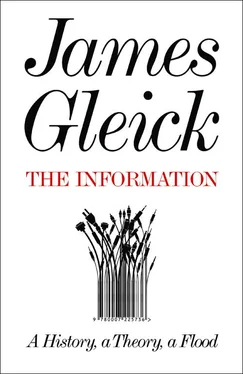
 ”) from declarations (“you are happy
”) from declarations (“you are happy  ”). But for other languages, including, most famously, Mandarin and Cantonese, tone has primary significance in distinguishing words. So it does in most African languages. Even when Europeans learned to communicate in these languages, they generally failed to grasp the importance of tonality, because they had no experience with it. When they transliterated the words they heard into the Latin alphabet, they disregarded pitch altogether. In effect, they were color-blind.
”). But for other languages, including, most famously, Mandarin and Cantonese, tone has primary significance in distinguishing words. So it does in most African languages. Even when Europeans learned to communicate in these languages, they generally failed to grasp the importance of tonality, because they had no experience with it. When they transliterated the words they heard into the Latin alphabet, they disregarded pitch altogether. In effect, they were color-blind.